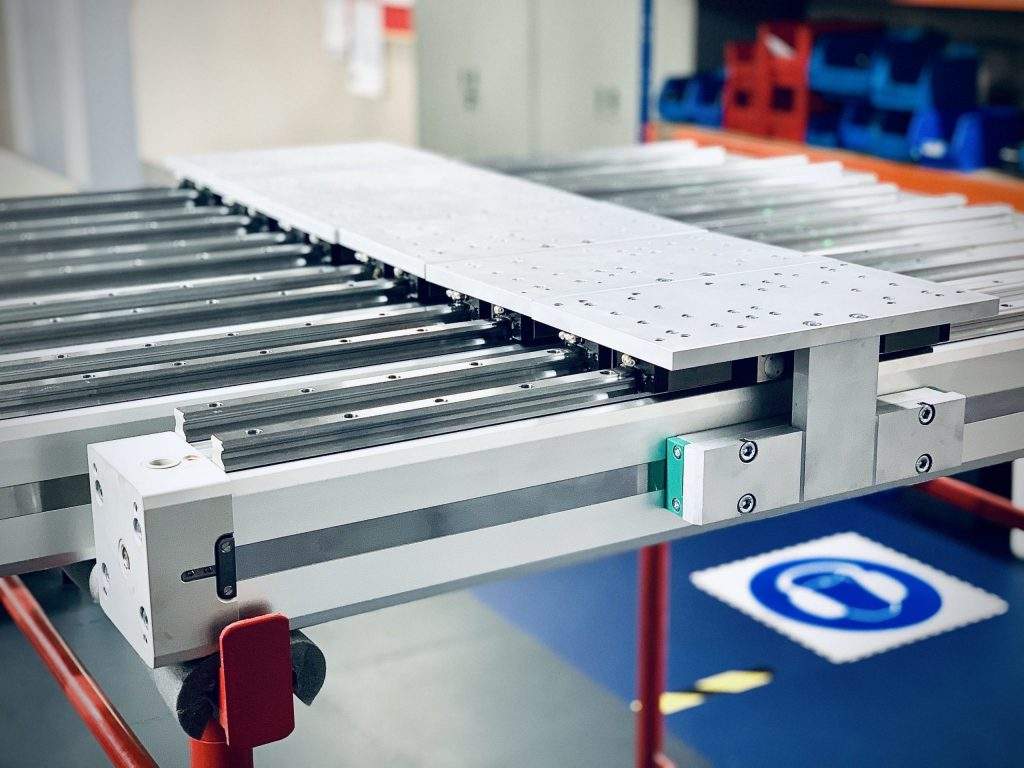
Linear actuators move loads in a single direction to a specific point and back again. Variable in type and power source, with different designs suited to specific applications, linear actuators are used widely throughout all sorts of industries. A linear rail actuator is a particular type of linear actuator which tends to be used for applications that have an unusual shape or size of load, and where smooth and precise movement is essential. We take a look here at linear rail actuators, their most common applications and some of the advantages of choosing a linear rail.
What is a linear actuator?
Linear actuators are used in a wide variety of industries, from food processing plants and pharmaceuticals to heavy industry like construction and mining. A linear actuator simply moves a load from one position to another in a straight line – either up and down or forward and backward. Hydraulics or pneumatics are the more obvious source of power for linear travel, however, where a movement needs to be controlled and precise, electric motors are often used, with rotary motion transferred to linear in order to provide power.
What are linear rail actuators?
Linear actuators generally have a solid body and move a load using a mechanical technique such as a rod which extends the load away from the solid body. The limitations of these types of actuators are that the load can only travel as far as the combination of housing slider extension will allow. Linear rails offer the benefit of removing this type of constraint; a linear rail actuator is formed of a stationery base and a carriage. The carriage holds the load either above or below the rail, travelling along the rail without the same restriction on distance.
The rail is generally made of rigid aluminium; a strong, lightweight, non-corrosive solution that provides stability for the movement. One of the more common linear rail actuators is the linear ball screw, which has a load mount containing ball bearings that travel in a helical path around a threaded shaft, allowing the actuator to move with an extremely smooth motion. The ball bearings provide a low-friction solution, making them much more efficient and high-precision than their counterparts, the screw and nut option. If repeatability, accuracy and thrust force are required then the linear ball screw is likely to be the linear rail actuator of choice.
Common applications for linear rails
Linear rail actuators can work at both ends of the scale, providing highly accurate, finely tuned movement in precision manufacturing environments, through to transporting heavy or bulky loads across a distance. One of the key benefits of linear rail actuators is that they are not constrained in terms of distance. Their versatility makes the linear rail a widely used solution, and some examples of their uses include:
- Processing plants: aluminium is naturally odourless and non-permeable, and is well suited to CIP and SIP clean down processes, making linear rails an ideal solution for hygienic processing environments like food and pharmaceuticals.
- Transportation of goods: often mounted high above the factory floor, linear rail actuators can be used to move heavy equipment or goods around the footprint of the plant. With the load centred beneath the rail and bearing block, loads are effectively carried beneath the rail whilst remaining above the walkways and busy workspaces below.
- Cartesian robots: gantry systems are common in many factory environments, moving loads through 3 different axis and using multiple rails to provide greater moment capacity.
Advantages of linear rail actuators:
Load bearing capacity and stability
Linear rails will cope with heavy and cumbersome loads through the use of multiple rails if necessary. The use of additional support prevents the load from rotating, making it ideal for heavy industry, and if the load is particularly unusual, specialist configurations of rails are available to facilitate this type of linear motion.
Accuracy:
With linear rails produced to tighter tolerances than alternative solutions, the resulting movements can be smoother and more consistent.
Space saving:
If the environment is one where space is limited or at a premium, linear rail actuators can be an ideal solution because the assembly does not protrude beyond the length of the rail itself. Specialist rail configurations are also available for miniature, compact and reduced height solutions.
Load bearing direction
Linear rail actuators work with a 45-degree contact angle, meaning that they can bear an equal load in lateral, radial and reversed radial directions.
Linear rail actuators offer a whole range of advantages over other types of linear actuator and are easily configurable through the various rail and actuator options available. For linear motion, linear rails are one of the most popular solutions on the market, and for good reason; if you would like to learn more about bespoke linear rail solutions from the experts, visit Matara UK’s website for more details.